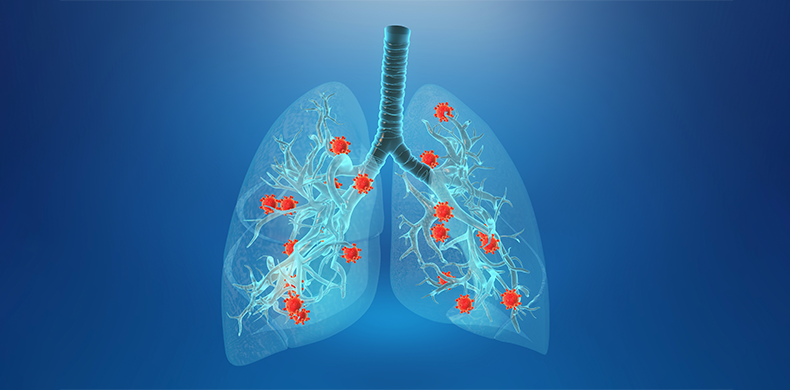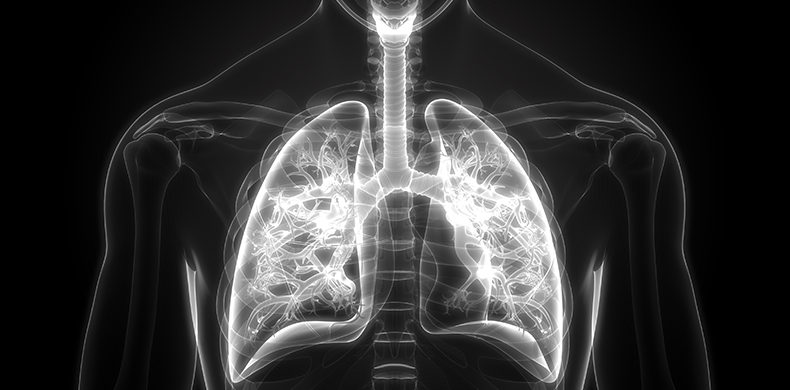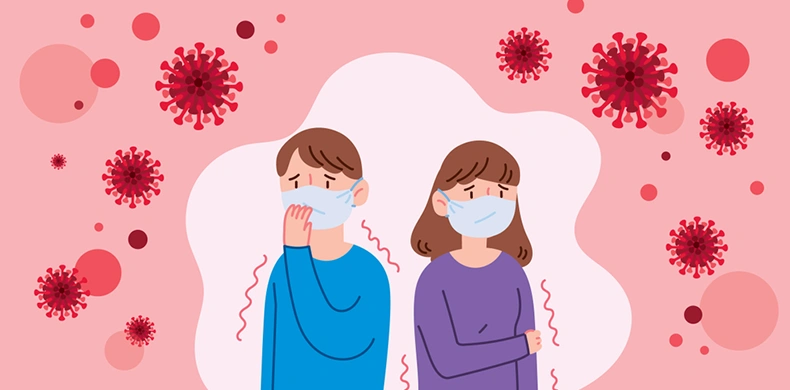Nowadays, our body faces many challenges due to lifestyle and environmental changes, respiratory infection is one of them. Respiratory infections are a very common disease that affects our lungs and causes breathing problems. They can be classified into upper and lower respiratory infections, each with distinct causes, symptoms, and treatments. Understanding these differences can help in managing infections effectively.
What is a Respiratory Infection?
A respiratory infection is very common lung infection which occur in our body due to bacteria cause inflammation in the mucous membranes of your respiratory system, which affects areas like nose, mouth and airways. Airborne threats like Legionella and pneumococci bacteria lurk unseen, posing health risks through the very breath we take. These infections are categorized as:
- Upper Respiratory Infections (URIs): Targeting the sinuses and throat, these ailments disrupt the upper respiratory system, impacting breathing and overall well-being.
- Lower Respiratory Infections (LRIs): Lower respiratory infections affecting the airways and lungs, challenging breathing and the body�s respiratory equilibrium.
Upper Respiratory Infections (URIs)
What is an Upper Respiratory Infection?
An Upper Respiratory Infection (URI) impacts the nose, throat, sinuses, and upper airways. Usually viral, it spreads through airborne droplets from coughs or sneezes. Rest and fluids aid recovery effectively.
Types Of Upper Respiratory Infection
- Common Cold: The common cold causes runny nose and coughing
- Epiglottitis: Epiglottitis causes severe throat pain and breathing difficulties
- Laryngitis: Laryngitis leads to hoarse voice and throat discomfort
- Pharyngitis: Pharyngitis results in sore throat and swallowing difficulty
- Sinusitis: Sinusitis causes nasal congestion, facial pain, and headache
Causes of Upper Respiratory Infections
URIs are typically caused by viruses or bacteria entering the respiratory system. This can happen through:
- Touching an infected surface and then touching the face.
- Close contact can spread infection, like sharing utensils.
Who is at Risk?
While anyone can contract a URI, certain groups are more susceptible, including:
- Children: Due to frequent contact with other children and less frequent hand washing.
- People with Heart or Lung Conditions: These individuals have a higher risk of complications.
- Individuals with Weak Immune Systems: Those with underlying diseases may experience more severe infections.
Symptoms of Upper Respiratory Infections
Symptoms can include:
- Persistent cough with phlegm
- Hoarse voice and sore throat
- Fatigue and mild to moderate fever
- Red, watery or itchy eyes
- Runny nose and nasal congestion

Diagnosis of Upper Respiratory Infections
Diagnosis is usually based on a physical examination and symptoms. Healthcare providers might:
- Examine the nose, ears, and throat.
- Listen to the chest.
In some cases, additional tests such as X-rays, CT scans, or throat swabs might be necessary.
Treatment for Upper Respiratory Infections
Most URIs resolve on their own within one to two weeks. Treatment focuses on relieving symptoms and may include:
- Rest
- Drinking plenty of fluids
- Over-the-counter pain relievers
If symptoms persist beyond two weeks, medical consultation is recommended to rule out conditions like pneumonia or bronchitis.
Lower Respiratory Infections (LRIs)
What is a Lower Respiratory Infection?
A lower respiratory infection affects the bronchi and lungs, unlike less severe upper respiratory infections. Symptoms include coughing, breathing difficulties, and sometimes fever, potentially leading to pneumonia or bronchitis.
Types Of Lower Respiratory Infection
- Bronchitis: Infection of the lung�s airways, causing cough and fever.
- Bronchiolitis: Mostly affects young children, causing inflammation in the smallest air passages of the lungs.
- Chest Infection: General term for infections in the chest area.
- Pneumonia: Severe infection causing inflammation in the air sacs of the lungs.
Causes of Lower Respiratory Infections
LRIs are caused by viruses, bacteria, or fungi entering the lower parts of the respiratory system. They can occur following a URI that spreads downward or due to direct infection from external sources.
Symptoms of Lower Respiratory Infections
Symptoms can be more severe and include:
- Persistent cough: lasts longer than three weeks, worsening over time.
- Shortness of breath: difficulty breathing even during rest or sleep.
- Chest pain: sharp or dull discomfort while breathing deeply.
- High fever: temperature above 100.4�F (38�C) lasting several days.
- Wheezing: high-pitched whistling sound while exhaling or breathing.
- Severe fatigue: overwhelming tiredness affecting daily activities and energy levels.

Diagnosis of Lower Respiratory Infections
Diagnosis might involve:
- Chest X-rays: to visualize abnormalities in lung structure.
- CT scans: detailed images to assess lung conditions thoroughly.
- Sputum tests: analyze phlegm for bacteria or viruses present.
- Pulmonary function tests: measure lung capacity and efficiency.
Treatment for Lower Respiratory Infections
Treatment for LRIs can be more intensive and may include:
- Antibiotics (for bacterial infections): prescribed to target specific bacteria causing the infection, ensuring effective treatment.
- Antiviral medications (for viral infections): used to combat viruses like influenza or respiratory syncytial virus (RSV), aiding recovery.
- Antifungal medications (for fungal infections): prescribed when fungal pathogens like Aspergillus or Candida are identified, addressing fungal lung infections.
- Hospitalization in severe cases: necessary for patients requiring oxygen therapy and intravenous fluids to manage severe respiratory distress effectively.
Preventing Respiratory Infections
Preventive measures include:
- Regular hand washing with soap and water.
- Using hand sanitizers when soap is unavailable.
- Avoiding close contact with infected individuals.
- Covering the mouth and nose when coughing or sneezing.
- Keeping vaccinations up to date, including the flu vaccine.
Conclusion
Respiratory infections, whether upper or lower, are common but preventable ailments. Recognizing infections such as Influenza A and B, and COVID-19 is crucial. Patients presenting with fever and cough should undergo tests like a chest X-ray, COVID swab, and blood cultures before considering antibiotics. Understanding appropriate treatments can significantly reduce their impact. By following preventive measures and seeking timely medical advice, one can effectively manage and recover from respiratory infections. So for better advice on respiratory infections, feel free to consult with Prof. Dr. Syed Arshad Husain, the best pulmonologist in Dubai.



